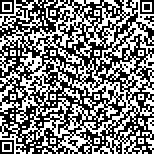| 引用本文: |
伍梦思,刘华,李杳瑶,谭年花,苏联军,彭杰,陈扬,陈斌.基于EGFR/MAPK/ERK信号通路探讨鳖甲煎丸对MHCC-97H肝癌细胞皮下瘤的抑瘤作用[J].湖南中医药大学学报,2024,44(2):227-234[点击复制] |
|
| |
|
|
| 本文已被:浏览 1495次 下载 769次 |
| 基于EGFR/MAPK/ERK信号通路探讨鳖甲煎丸对MHCC-97H肝癌细胞皮下瘤的抑瘤作用 |
| 伍梦思,刘华,李杳瑶,谭年花,苏联军,彭杰,陈扬,陈斌 |
| (湖南中医药大学第一中医临床学院, 湖南 长沙 410007;湖南中医药大学, 湖南 长沙 410208) |
| 摘要: |
| 目的 基于表皮生长因子受体(epidermal growth factior receptor, EGFR)/丝裂原活化蛋白激酶(mitogen-activated protein kinase, MAPK)/细胞外信号调节激酶(extracellular signal-regulated kinase, ERK)信号通路探究鳖甲煎丸对MHCC-97H肝癌细胞皮下瘤的抑瘤作用及作用机制。方法 选取30只雄性BLAB/c裸鼠,建立MHCC-97H肝癌细胞皮下瘤模型。造模成功后随机分为模型组,鳖甲煎丸低、中、高剂量组(0.55、1.1、2.2 g/kg),西药组(乐伐替尼4 mg/kg+吉非替尼80 mg/kg),每组6只。鳖甲煎丸低、中、高剂量组灌胃2次/d,西药组每周灌胃5 d,模型组予以等量生理盐水2次/d灌胃,每组连续干预2周。观察大鼠一般情况;计算各组大鼠抑瘤率;HE染色观察病理形态学变化;RT-qPCR检测瘤体组织中EGFR、丝裂原活化蛋白质激酶激酶(mitogen-activated protein kinase kinase,MEK)、ERK1、ERK2 mRNA表达水平;Western blot检测EGFR、磷酸化的EGFR(p-EGFR)、MEK、磷酸化的MEK(p-MEK)、ERK1、ERK2、磷酸化的ERK1/2(p-ERK1/2)、基质金属蛋白酶-1(matrix metalloproteinase-1,MMP-1)、细胞周期蛋白D1(cell cycle protein D1,Cyclin D1)、神经型钙黏附蛋白(N-cadherin)、上皮型钙黏附蛋白(E-cadherin)相对表达水平。结果 与模型组比较,鳖甲煎丸低、中、高剂量组及西药组精神、反应、进食饮水等情况均明显改善。与第0天比较,各组第14天体质量明显降低(P<0.01)。与模型组、鳖甲煎丸低剂量组比较,鳖甲煎丸中、高剂量组和西药组瘤体质量减轻(P<0.05,P<0.01)。鳖甲煎丸低、中、高剂量组和西药组抑瘤率分别为20%、47.73%、55.91%、75.45%。与模型组比较,鳖甲煎丸低、中、高剂量组及西药组肿瘤细胞排列疏松,边界模糊,细胞核固缩、破裂,其中西药组最明显。与模型组比较,鳖甲煎丸低、中、高剂量组和西药组EGFR、MEK、ERK1、ERK2mRNA表达水平明显下降(P<0.01);与鳖甲煎丸低剂量组比较,鳖甲煎丸高剂量组和西药组EGFR、MEK、ERK1、ERK2 mRNA表达水平显著降低(P<0.01),鳖甲煎丸中剂量组ERK1 mRNA表达水平显著降低(P<0.01);与鳖甲煎丸中剂量组比较,西药组EGFR、ERK2 mRNA表达水平降低(P<0.05,P<0.01)。与模型组比较,鳖甲煎丸中、高剂量组和西药组p-EGFR/EGFR、p-MEK/MEK、p-ERK1/ERK1、p-ERK2/ERK2、MMP-1、Cyclin D1、N-cadherin蛋白相对表达水平下降(P<0.05,P<0.01),E-cadherin蛋白相对表达水平明显升高(P<0.01)。与鳖甲煎丸高剂量组比较,西药组p-EGFR/EGFR、p-ERK1/ERK1、MMP-1、Cyclin D1、N-cadherin蛋白相对表达水平明显下降(P<0.01),E-cadherin蛋白相对表达水平升高(P<0.05)。结论 鳖甲煎丸可能通过抑制EGFR/MAPK/ERK信号通路激活,从而下调MMP-1、Cyclin D1、N-cadherin蛋白,上调E-cadherin蛋白表达,进而对MHCC-97H肝癌细胞皮下瘤产生显著的抑制作用。 |
| 关键词: 鳖甲煎丸 表皮生长因子受体 丝裂原活化蛋白激酶 细胞外信号调节激酶 原发性肝癌 活血化瘀 |
| DOI:10.3969/j.issn.1674-070X.2024.02.008 |
| 投稿时间:2023-10-13 |
| 基金项目:湖南省临床医学研究中心(基地)项目(2021SK4023);湖南省自然科学基金项目(2023JJ40487);中国博士后科学基金项目(2022M721127);湖南中医药大学研究生创新课题项目(2022CX29)。 |
|
| Inhibitory effects of Biejiajian Pill on subcutaneous tumor of MHCC-97H hepatoma cells based on EGFR/MAPK/ERK signaling pathway |
| WU Mengsi,LIU Hua,LI Yaoyao,TAN Nianhua,SU Lianjun,PENG Jie,CHEN Yang,CHEN Bin |
| (The First Clinical School of Chinese Medicine, Hunan University of Chinese Medicine, Changsha, Hunan 410007, China;Hunan University of Chinese Medicine, Changsha, Hunan 410208, China) |
| Abstract: |
| Objective To investigate the inhibitory effects and their mechanism of Biejiajian Pill(BJJP) on the subcutaneous tumor of MHCC-97H hepatoma cells based on the signaling pathway of epidermal growth factor receptor(EGFR)/mitogen-activated protein kinase(MAPK)/extracellular signal-regulated kinase(ERK).Methods A total of 30 male BLAB/c nude mice were used to establish a subcutaneous tumor model of MHCC-97H hepatoma cells. After successful modeling, they were randomized into model group, low-, medium-, and high-dose BJJP groups, and western medicine group, with six mice in each group. Low-, medium-, and high-dose BJJP groups were treated with concentrated BJJP 0.55 g/kg, 1.1 g/kg, and 2.2 g/kg, respectively, twice a day; western medicine group was administered Lenvatinib 4 mg/kg combined with Gefitinib 80 mg/kg, 5 days a week; model group was given the equal volume of normal saline; twice a day. The intervention was carried out by gavage for 14 days successively. The general condition of mice was observed, and the tumor inhibition rate of each group was calculated. HE staining was used to observe pathological and morphological changes; RT-qPCR was used to determine the mRNA expression levels of EGFR, mitogen-activated protein kinase kinase(MEK), ERK1, and ERK2 in the tumor tissue; Western blot was used to examine the relative expression levels of EGFR, phosphorylated EGFR(p-EGFR), MEK, phosphorylated MEK(p-MEK), ERK1, ERK2, phosphorylated ERK1/2(p-ERK1/2),matrix metalloproteinase-1(MMP-1), cell cycle protein D1(Cyclin D1), N-cadherin, and E-cadherin.Results Compared with model group, the condition of spirit, reactions, and intake of food and water of mice in low-, medium-, and high-dose BJJP groups and western medicine group were improved significantly. Compared with day 0, the body weight of mice in each group was significantly lower on the 14th day, with the most obvious reduction in western medicine group(P<0.01). Compared with model and low-dose BJJP groups, the tumor mass of mice in medium-and high-dose BJJP groups and western medicine group was significantly reduced(P<0.05, P<0.01). The tumor inhibition rates of low-, medium-, and high-dose BJJP groups and western medicine group were 20%, 47.73%, 55.91%, and 75.45%, respectively. Compared with model group, the tumor cells in the low-, medium-, and high-dose BJJP groups and western medicine group were loosely arranged and the boundaries were blurred, and the cell nuclei were condensed and ruptured, especially in western medicine group. Compared with model group, the mRNA expression levels of EGFR, MEK, ERK1, and ERK2 in low-, medium-, and high-dose BJJP groups and western medicine group significantly decreased(P<0.01); compared with low-dose BJJP group, the mRNA expression levels of EGFR, MEK, ERK1, and ERK2 in high-dose BJJP and western medicine groups were significantly reduced(P<0.01), and that of ERK1 in medium-dose BJJP group was significantly lower(P<0.01); compared with medium-dose BJJP group, the mRNA expression levels of EGFR and ERK2 in western medicine group decreased(P<0.05, P<0.01). Compared with model group, medium-and high-dose BJJP groups and western medicine group showed a decrease in the relative protein expression levels of p-EGFR/EGFR, p-MEK/MEK, p-ERK1/ERK1, p-ERK2/ERK2, MMP-1, Cyclin D1, and N-cadherin(P<0.05, P<0.01), and a significant increase in the relative protein expression level of E-cadherin(P<0.01). Compared with high-dose BJJP group, the relative protein expression levels of p-EGFR/EGFR, p-ERK1/ERK1, MMP-1, Cyclin D1, and N-cadherin in western medicine group were significantly reduced(P<0.01), while that of E-cadherin was elevated(P<0.05).Conclusion BJJP may downregulate the protein expressions of MMP-1, Cyclin D1, and N-cadherin and upregulate that of Ecadherin by inhibiting EGFR/MAPK/ERK signaling pathway activation, thereby exerting significant inhibitory effects on the subcutaneous tumor of MHCC-97H hepatoma cells. |
| Key words: Biejiajian Pill epidermal growth factor receptor mitogen-activated protein kinase extracellular signal-regulated kinase primary liver cancer circulating blood and eliminating blood stasis |
|

二维码(扫一下试试看!) |
|
|
|
|




